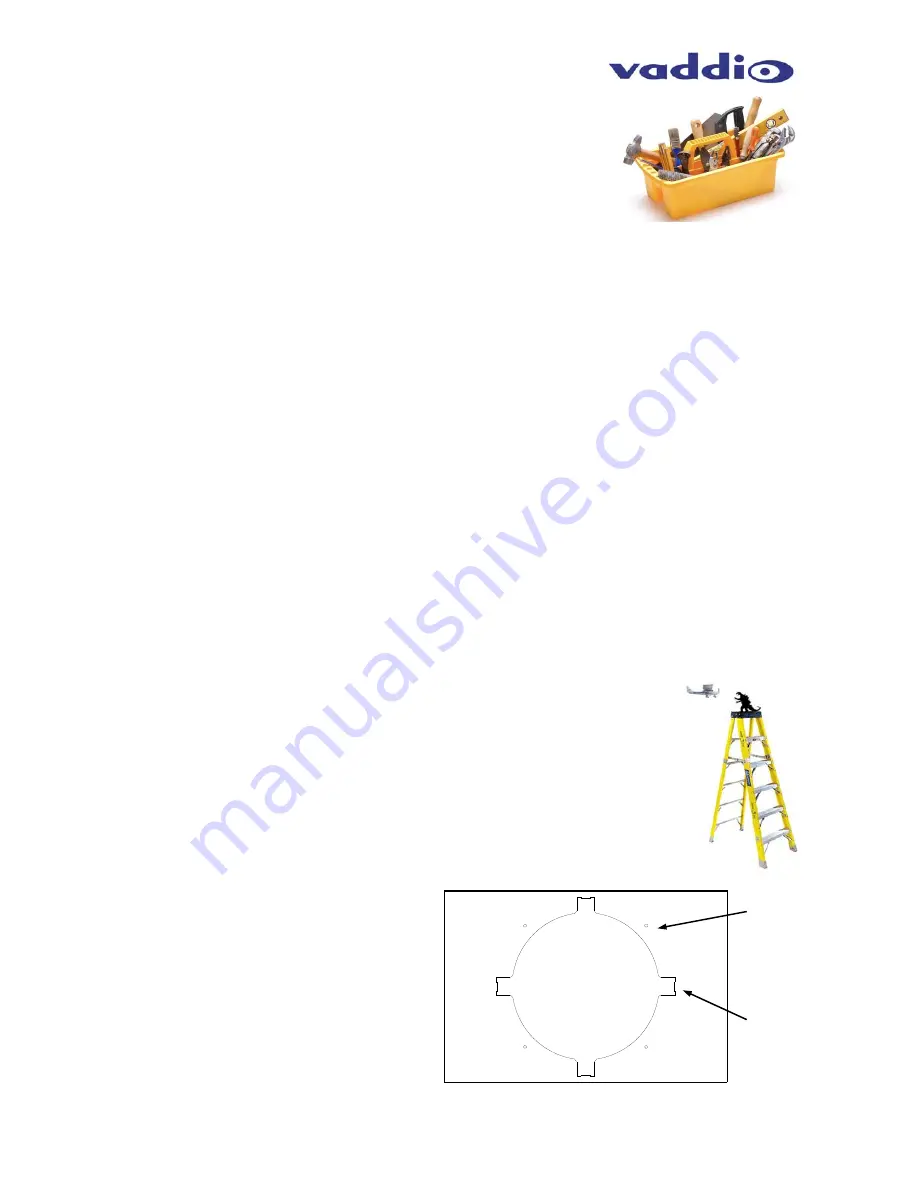
DomeVIEW HD - 12” Indoor Flush Mount Dome
DomeVIEW HD - 12” Indoor Flush Mount Dome Manual 342-0186 Rev. B
Page 5 of 8
Before Starting the Installation:
The 12” Flush Mount Dome Enclosure for the HD-Series and RoboSHOT
cameras is an integrated enclosure designed for installation in a suspended
ceiling tile. It has a broadened metal flange on the metal back can to allow
mounting into gypsum board or hardwood ceilings as well.
Before starting the installation of the enclosure and camera, check above the ceiling where the camera is to be
installed to verify the area is clear of obstructions and confirm that there is adequate room for the camera
enclosure.
Vaddio HD and RoboSHOT Series PTZ cameras use Cat-5e cable for video power and control. When
terminating the Cat-5e cabling, make sure that each cable is
marked
for purpose “Power, Video or Control”
and is tested for proper termination of all ends with a continuity tester. Please do not use the “pass -thru” type
RJ-45 connectors.
All above-ceiling work must conform to local building codes and should be performed by qualified personnel.
There is a clamp down ¾” conduit connector on the back of the metal back can that can be switched out to an
EMT type connector to seal the box for areas that have building codes that require conduit for all cabling. The
conduit connector attaches a Safety Hanger Bracket for securing the dome to the structure of the building.
The supplied one-piece tile support brace has six (6) points that can be tied to the structure for additional
support and to meet seismic stabilization requirements.
The metal back can and tile support brace allows for some flexibility and positioning freedom when used with
2’x2’ and 2’x4’ ceiling tiles. The camera does not have to be mounted in the center of the tile and can be moved
along the length of the tile.
Before cutting the hole in the ceiling tile, remove the ceiling tile from the grid and place it on a suitable and safe
work surface. Always measure twice, and then check your work, then cut the tile.
STEP-BY-STEP Installation Instructions:
Step 1:
For the most obvious reasons, a ladder is required to install the Indoor Flush Mount
Enclosure and Vaddio PTZ camera into an acoustic tile ceiling. Safety comes first, so
please use safe tools ladders and installation practices.
Choose the tile that the enclosure and camera are to be installed. Make sure that it is
not too close to a wall or ceiling lighting fixture that will serve to interfere with proper
operation of the camera lens or iris. Mark the optimum location on the tile.
Step 2:
Remove the ceiling tile from the grid. Place the
tile on a safe work surface away from finished
furniture. Use the supplied Tile Support Brace as
a template. Push the positioning tabs into the tile
and trace out the opening for the Metal Back Can
and be sure to notch out the four (4) areas with
the positioning tabs. Poke holes through the tile
for the four (4) attachment screws for the back can
flange. Measure twice, cut once. Carefully cut
this hole in the ceiling tile, scoring the front of the
tile first with a sharp utility knife. Dull tools are
never a good idea…generally.
Positioning Tab
Notches (X4)
Back Can
Flange
Mounting
Holes (X4)








